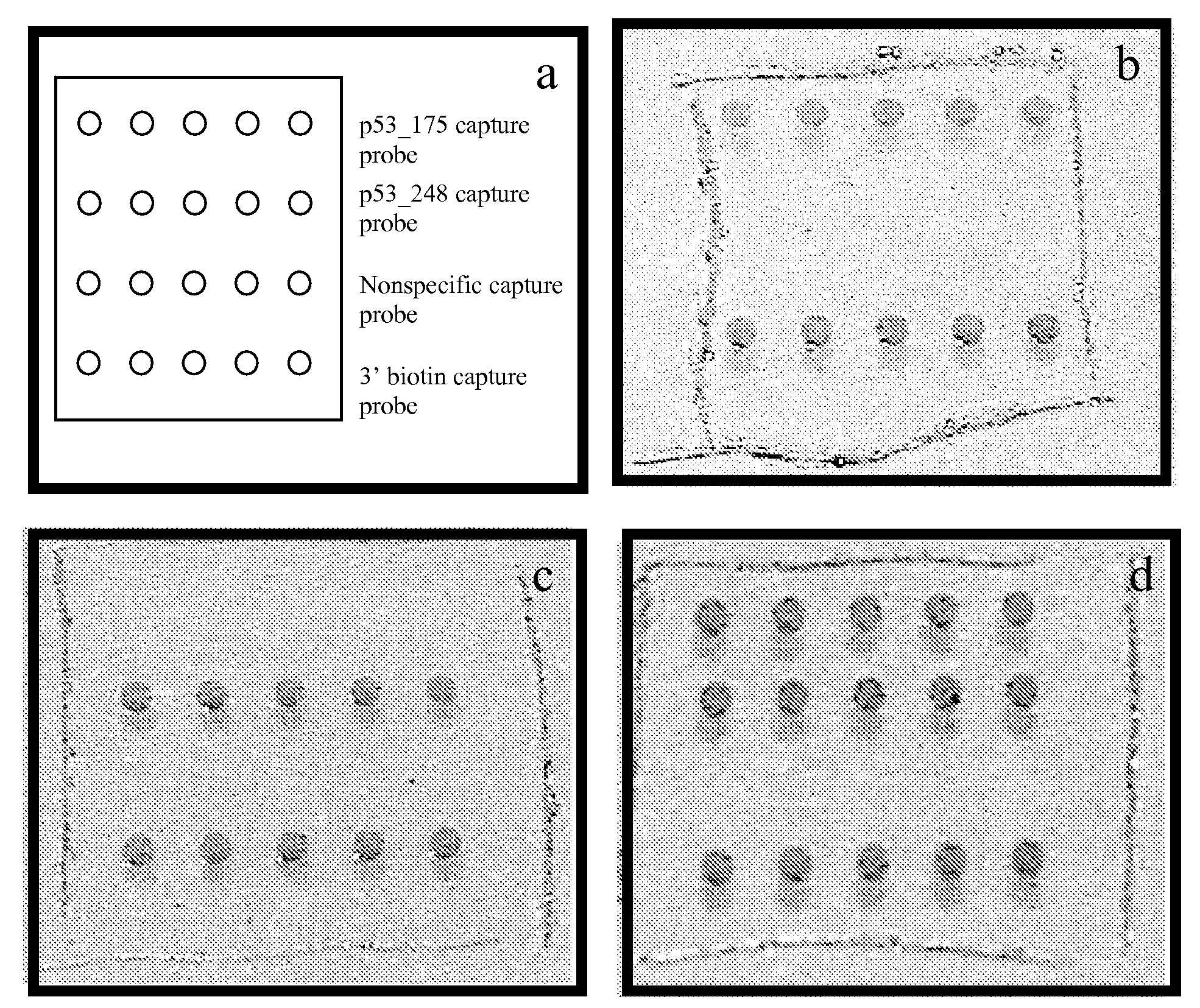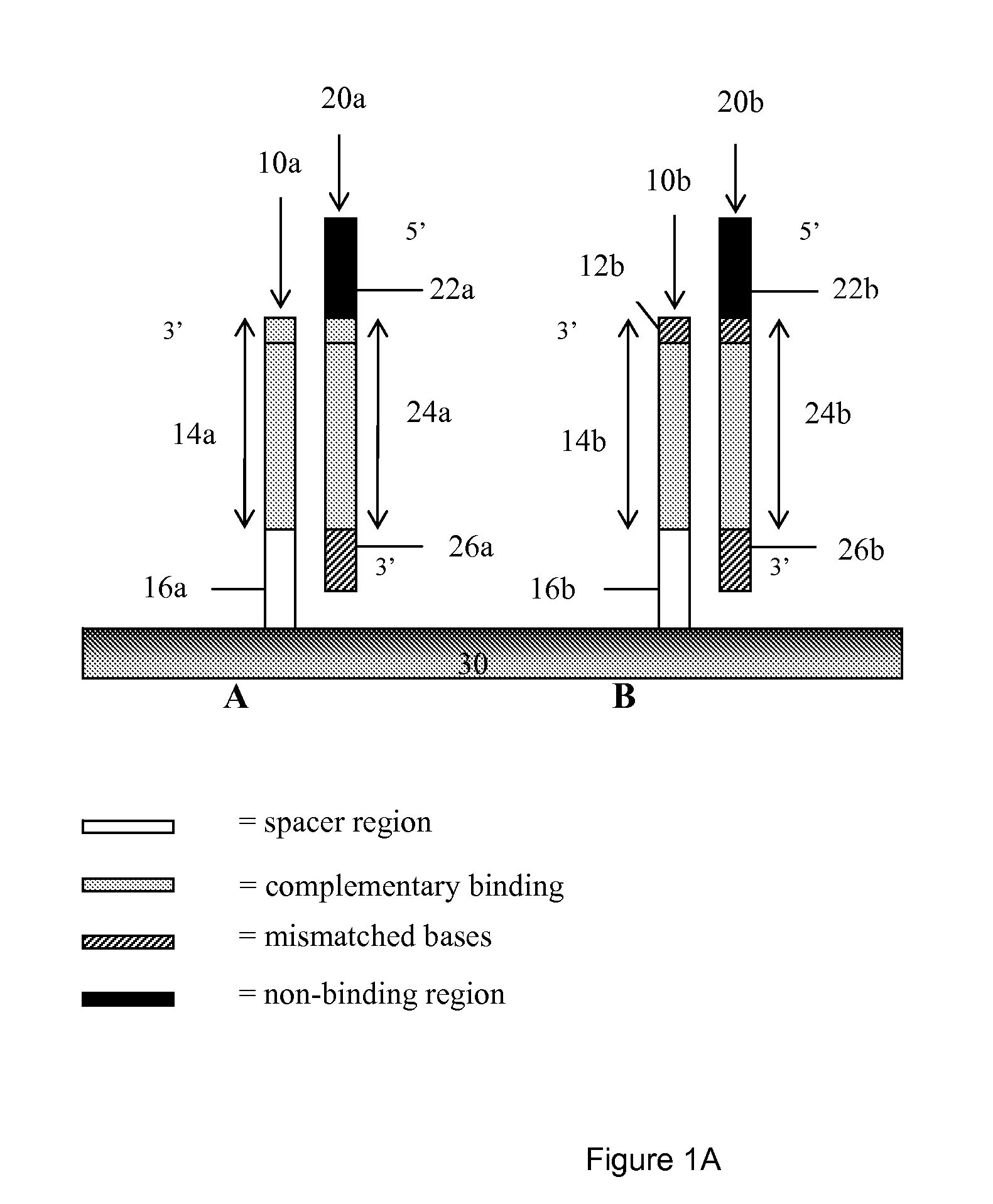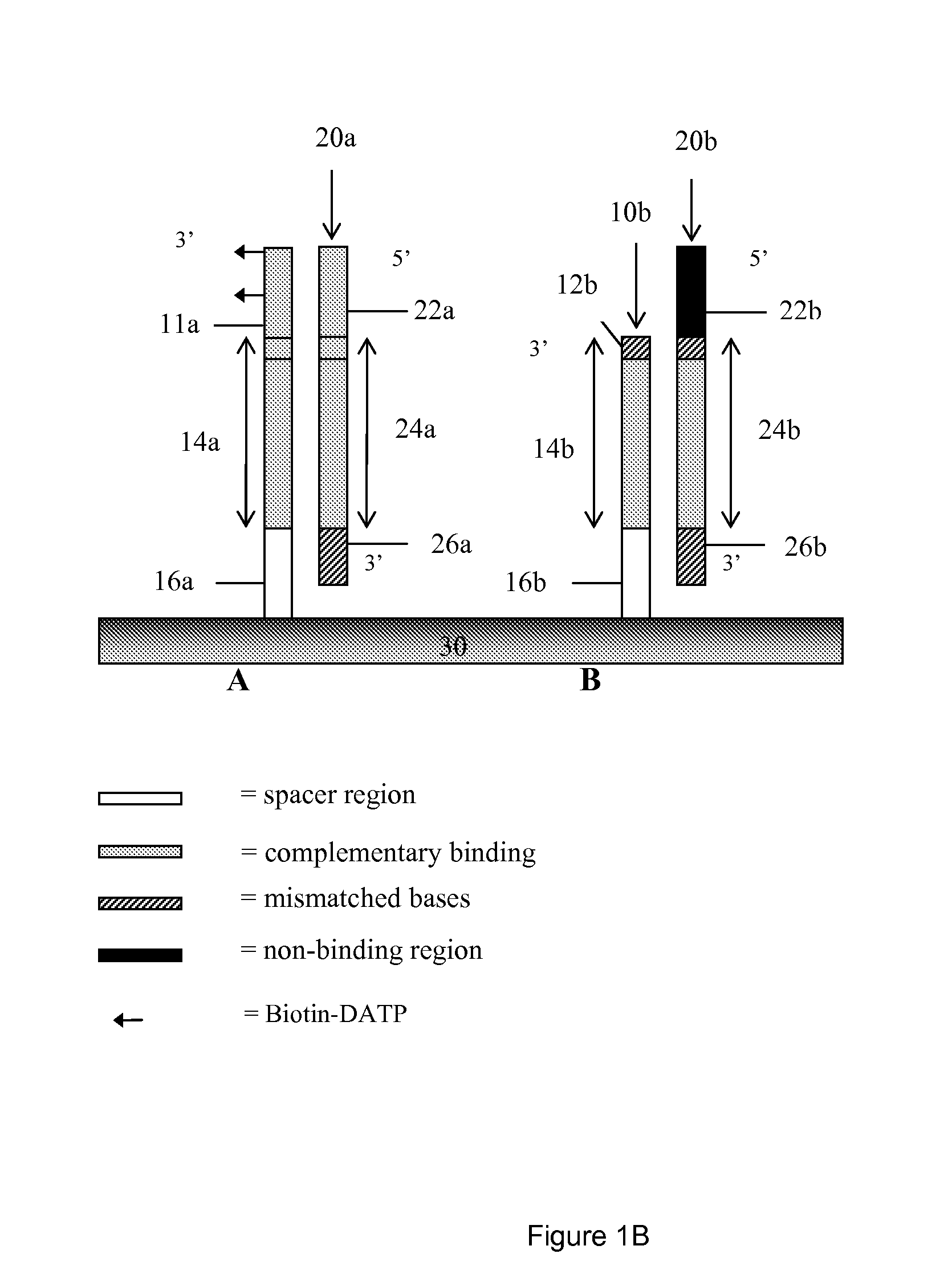Detection of nucleic acid biomarkers using polymerization-based amplification
a nucleic acid biomarker and polymerization-based amplification technology, applied in the field can solve the problems of increasing the difficulty of detection of molecular recognition events such as dna hybridization and the relatively high cost of detection
- Summary
- Abstract
- Description
- Claims
- Application Information
AI Technical Summary
Benefits of technology
Problems solved by technology
Method used
Image
Examples
example
[0113]The polymerization-based assay described herein can provide visual, sensitive, and multiplexed detection of DNA hybridization from complex biological mixtures with a dynamic detection range. These assay capacities were demonstrated on simple glass microscope slides without the need for highly specialized biosensor surfaces. Further, the potential for dramatic improvements in signal specificity from allele-specific signal amplification is demonstrated through the visual discrimination between wild type (wt) and mutant alleles containing a single base mutation. Prominent genomic biomarkers targets commonly detectable from bodily fluids of cancer patients, including the KRAS proto-oncogene (15) and the p53 tumor suppressor gene (16) are used for demonstration.
[0114]Materials and Methods
[0115]Oligonucleotide Selection
[0116]The synthetic oligonucleotides from Integrated DNA Technologies (Coralville, Iowa) or Operon (Huntsville, Ala.) were ordered with HPLC or PAGE purification and ...
PUM
| Property | Measurement | Unit |
|---|---|---|
| Fraction | aaaaa | aaaaa |
| Water solubility | aaaaa | aaaaa |
Abstract
Description
Claims
Application Information
 Login to View More
Login to View More - R&D
- Intellectual Property
- Life Sciences
- Materials
- Tech Scout
- Unparalleled Data Quality
- Higher Quality Content
- 60% Fewer Hallucinations
Browse by: Latest US Patents, China's latest patents, Technical Efficacy Thesaurus, Application Domain, Technology Topic, Popular Technical Reports.
© 2025 PatSnap. All rights reserved.Legal|Privacy policy|Modern Slavery Act Transparency Statement|Sitemap|About US| Contact US: help@patsnap.com



